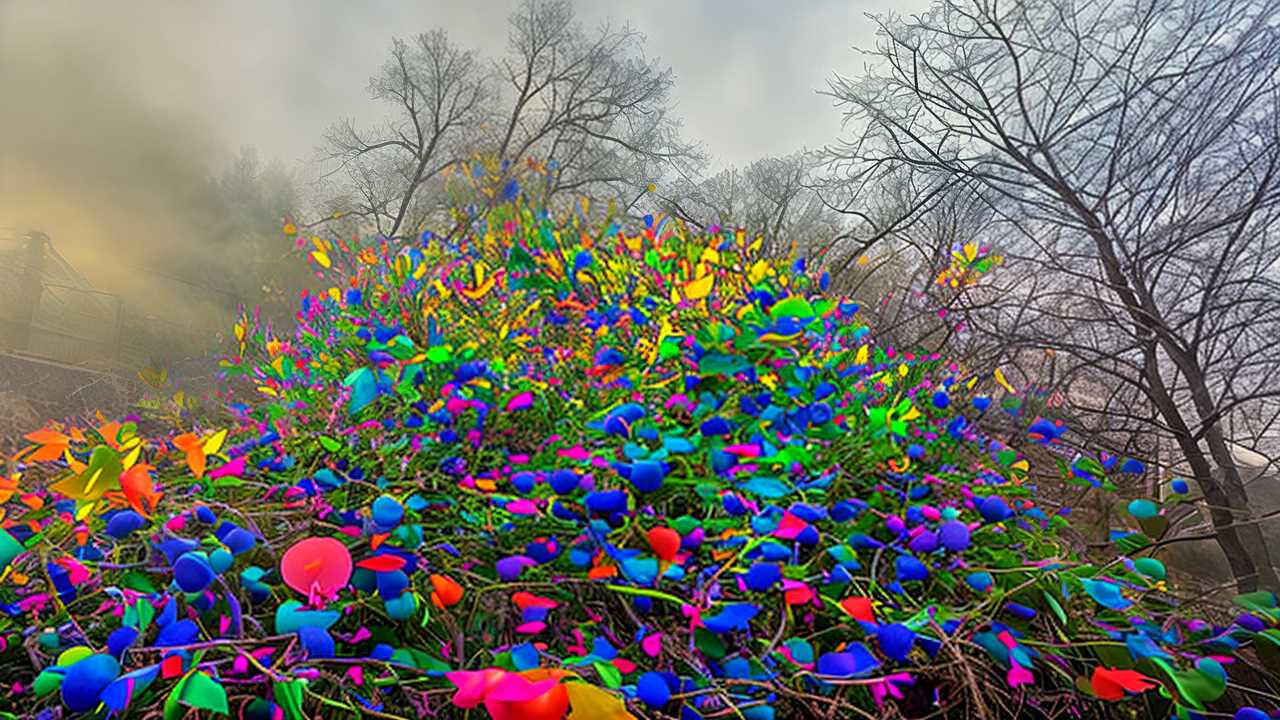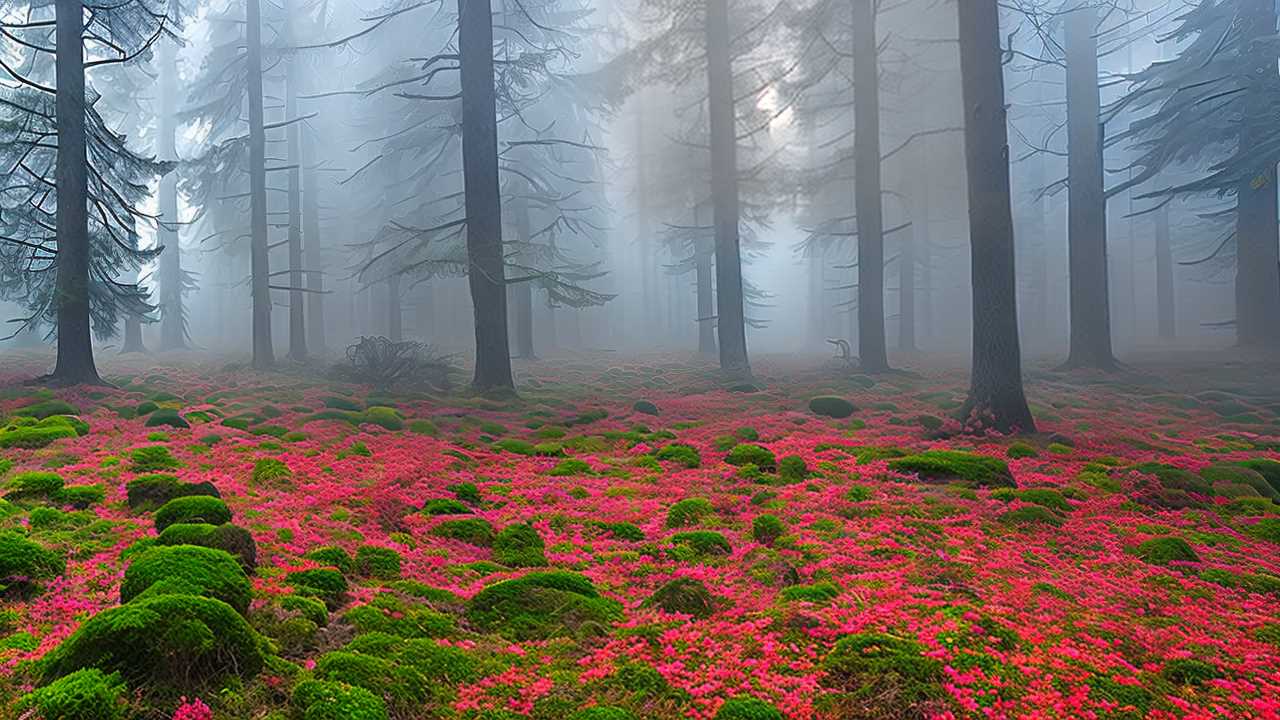You use color contrast to guide visitors through your website, create a visually appealing palette, and evoke emotional responses in your audience. By balancing text and background colors, you ensure an optimal reading experience. A clear visual hierarchy draws attention to important information, and color harmony principles create a pleasing palette. But, it's not just about aesthetics - sufficient contrast between text and background is crucial for readability and usability. Want to learn how to harness the power of color contrast in web design? You're just getting started.
 When designing for readability, you'll want to grasp the fundamental principles of color contrast, which involve strategically selecting hues that make your content stand out against its background.
This means balancing the visual weight of your text and background colors to create an optimal reading experience. You'll want to consider the 60-30-10 rule, where 60% of the visual weight is allocated to the background, 30% to the text, and 10% to accents. This ratio ensures your content is legible and easy to read.
Another key principle is to choose colors with sufficient contrast. Aim for a minimum contrast ratio of 4.5:1 between your text and background colors. You can use online tools to calculate this ratio and ensure your colors meet accessibility standards. Additionally, consider the color harmony principles, such as analogous, complementary, and triadic colors, to create a visually appealing palette.
When designing for readability, you'll want to grasp the fundamental principles of color contrast, which involve strategically selecting hues that make your content stand out against its background.
This means balancing the visual weight of your text and background colors to create an optimal reading experience. You'll want to consider the 60-30-10 rule, where 60% of the visual weight is allocated to the background, 30% to the text, and 10% to accents. This ratio ensures your content is legible and easy to read.
Another key principle is to choose colors with sufficient contrast. Aim for a minimum contrast ratio of 4.5:1 between your text and background colors. You can use online tools to calculate this ratio and ensure your colors meet accessibility standards. Additionally, consider the color harmony principles, such as analogous, complementary, and triadic colors, to create a visually appealing palette.
 By strategically organizing visual elements, you create a clear visual hierarchy that guides users through your content, drawing their attention to the most important information first. This visual flow is crucial in web design, as it helps users quickly understand the structure and content of your page.
To create an effective visual hierarchy, you'll want to use size, color, and placement to create a clear order of importance. Use headings, subheadings, and paragraphs to create a clear structure, and make sure the most important elements stand out. You can also use color contrast to draw attention to specific parts of your design, such as calls-to-action or key information.
By creating a clear visual hierarchy, you'll make it easier for users to scan and engage with your content, improving their overall user experience.
By strategically organizing visual elements, you create a clear visual hierarchy that guides users through your content, drawing their attention to the most important information first. This visual flow is crucial in web design, as it helps users quickly understand the structure and content of your page.
To create an effective visual hierarchy, you'll want to use size, color, and placement to create a clear order of importance. Use headings, subheadings, and paragraphs to create a clear structure, and make sure the most important elements stand out. You can also use color contrast to draw attention to specific parts of your design, such as calls-to-action or key information.
By creating a clear visual hierarchy, you'll make it easier for users to scan and engage with your content, improving their overall user experience.
 As you balance contrasting colors to draw attention, you'll also need to consider how to harmonize them to create a visually appealing design that doesn't overwhelm the user. Color harmony is all about creating a visually pleasing palette that guides the user's eye through your design.
You can achieve harmony by using colors that work well together, like analogous colors (next to each other on the color wheel) or triadic colors (equidistant from each other on the color wheel). You can also use a dominant color and accent it with complementary or analogous colors to create visual interest.
As you balance contrasting colors to draw attention, you'll also need to consider how to harmonize them to create a visually appealing design that doesn't overwhelm the user. Color harmony is all about creating a visually pleasing palette that guides the user's eye through your design.
You can achieve harmony by using colors that work well together, like analogous colors (next to each other on the color wheel) or triadic colors (equidistant from each other on the color wheel). You can also use a dominant color and accent it with complementary or analogous colors to create visual interest.
 To ensure your content is readable, you're designing for sufficient contrast between text and background, making it easy on the eyes. This is crucial, as low contrast can lead to eye strain, fatigue, and even abandonment of your website.
When choosing colors, consider the 3:1 or 4.5:1 contrast ratio recommended by the Web Content Accessibility Guidelines (WCAG). This ensures your text is readable, even for users with visual impairments. Don't be afraid to experiment with different color combinations to find the perfect balance. Remember, contrast isn't just about aesthetics; it's about usability.
Dark text on a light background is often a safe bet, but don't rule out light text on a dark background if it fits your design. Be mindful of background images or patterns, as they can reduce contrast.
To ensure your content is readable, you're designing for sufficient contrast between text and background, making it easy on the eyes. This is crucial, as low contrast can lead to eye strain, fatigue, and even abandonment of your website.
When choosing colors, consider the 3:1 or 4.5:1 contrast ratio recommended by the Web Content Accessibility Guidelines (WCAG). This ensures your text is readable, even for users with visual impairments. Don't be afraid to experiment with different color combinations to find the perfect balance. Remember, contrast isn't just about aesthetics; it's about usability.
Dark text on a light background is often a safe bet, but don't rule out light text on a dark background if it fits your design. Be mindful of background images or patterns, as they can reduce contrast.
 You'll evoke different emotional responses in your users when you strategically select colors that align with your brand's personality and message. By doing so, you'll create an instant connection with your audience, making them more likely to engage with your website. For instance, if you're designing a wellness website, you might choose calming shades like blue or green to promote relaxation.
On the other hand, if you're creating an energetic and playful brand, vibrant colors like orange or yellow can evoke feelings of excitement and enthusiasm. It's essential to consider the emotional connotations of different colors and how they'll resonate with your target audience. Red, for example, can symbolize passion, energy, or even aggression, depending on the context. Meanwhile, green is often associated with nature, growth, and harmony.
You'll evoke different emotional responses in your users when you strategically select colors that align with your brand's personality and message. By doing so, you'll create an instant connection with your audience, making them more likely to engage with your website. For instance, if you're designing a wellness website, you might choose calming shades like blue or green to promote relaxation.
On the other hand, if you're creating an energetic and playful brand, vibrant colors like orange or yellow can evoke feelings of excitement and enthusiasm. It's essential to consider the emotional connotations of different colors and how they'll resonate with your target audience. Red, for example, can symbolize passion, energy, or even aggression, depending on the context. Meanwhile, green is often associated with nature, growth, and harmony.
 Effective contrast makes your design elements pop, and a well-executed contrast strategy can draw attention to calls-to-action, boost readability, and guide users through your website. You've learned how to create contrast, now let's explore some inspiring examples.
Take a look at the website of the fashion brand, Everlane. They use high contrast between their dark background and bright accents to make their products stand out. This creates a visually appealing and engaging experience for users.
Another great example is the website of the design tool, Figma. They use contrast to separate different sections of their website, creating a clear hierarchy of information and guiding users through the page.
You can also use contrast to create visual interest and emphasize important elements. For instance, the website of the music streaming platform, Spotify, uses contrasting colors to highlight their call-to-action buttons, encouraging users to sign up or log in.
Effective contrast makes your design elements pop, and a well-executed contrast strategy can draw attention to calls-to-action, boost readability, and guide users through your website. You've learned how to create contrast, now let's explore some inspiring examples.
Take a look at the website of the fashion brand, Everlane. They use high contrast between their dark background and bright accents to make their products stand out. This creates a visually appealing and engaging experience for users.
Another great example is the website of the design tool, Figma. They use contrast to separate different sections of their website, creating a clear hierarchy of information and guiding users through the page.
You can also use contrast to create visual interest and emphasize important elements. For instance, the website of the music streaming platform, Spotify, uses contrasting colors to highlight their call-to-action buttons, encouraging users to sign up or log in.
Key Takeaways
• Balancing visual weight of text and background colors creates an optimal reading experience, ensuring a 4.5:1 contrast ratio for legibility. • A clear visual hierarchy guides users through content, drawing attention to important information using size, color, and placement. • Color harmony principles, such as analogous and triadic colors, create a visually appealing palette that guides the user's eye. • Sufficient contrast between text and background ensures readability, preventing eye strain and fatigue, and improving overall usability. • Strategically selected colors evoke emotional responses in users, aligning with the brand's personality and message to create an instant connection.Principles of Color Contrast
 When designing for readability, you'll want to grasp the fundamental principles of color contrast, which involve strategically selecting hues that make your content stand out against its background.
This means balancing the visual weight of your text and background colors to create an optimal reading experience. You'll want to consider the 60-30-10 rule, where 60% of the visual weight is allocated to the background, 30% to the text, and 10% to accents. This ratio ensures your content is legible and easy to read.
Another key principle is to choose colors with sufficient contrast. Aim for a minimum contrast ratio of 4.5:1 between your text and background colors. You can use online tools to calculate this ratio and ensure your colors meet accessibility standards. Additionally, consider the color harmony principles, such as analogous, complementary, and triadic colors, to create a visually appealing palette.
When designing for readability, you'll want to grasp the fundamental principles of color contrast, which involve strategically selecting hues that make your content stand out against its background.
This means balancing the visual weight of your text and background colors to create an optimal reading experience. You'll want to consider the 60-30-10 rule, where 60% of the visual weight is allocated to the background, 30% to the text, and 10% to accents. This ratio ensures your content is legible and easy to read.
Another key principle is to choose colors with sufficient contrast. Aim for a minimum contrast ratio of 4.5:1 between your text and background colors. You can use online tools to calculate this ratio and ensure your colors meet accessibility standards. Additionally, consider the color harmony principles, such as analogous, complementary, and triadic colors, to create a visually appealing palette.
Creating Visual Hierarchy
 By strategically organizing visual elements, you create a clear visual hierarchy that guides users through your content, drawing their attention to the most important information first. This visual flow is crucial in web design, as it helps users quickly understand the structure and content of your page.
To create an effective visual hierarchy, you'll want to use size, color, and placement to create a clear order of importance. Use headings, subheadings, and paragraphs to create a clear structure, and make sure the most important elements stand out. You can also use color contrast to draw attention to specific parts of your design, such as calls-to-action or key information.
By creating a clear visual hierarchy, you'll make it easier for users to scan and engage with your content, improving their overall user experience.
By strategically organizing visual elements, you create a clear visual hierarchy that guides users through your content, drawing their attention to the most important information first. This visual flow is crucial in web design, as it helps users quickly understand the structure and content of your page.
To create an effective visual hierarchy, you'll want to use size, color, and placement to create a clear order of importance. Use headings, subheadings, and paragraphs to create a clear structure, and make sure the most important elements stand out. You can also use color contrast to draw attention to specific parts of your design, such as calls-to-action or key information.
By creating a clear visual hierarchy, you'll make it easier for users to scan and engage with your content, improving their overall user experience.
Color Harmony in Design
 As you balance contrasting colors to draw attention, you'll also need to consider how to harmonize them to create a visually appealing design that doesn't overwhelm the user. Color harmony is all about creating a visually pleasing palette that guides the user's eye through your design.
You can achieve harmony by using colors that work well together, like analogous colors (next to each other on the color wheel) or triadic colors (equidistant from each other on the color wheel). You can also use a dominant color and accent it with complementary or analogous colors to create visual interest.
As you balance contrasting colors to draw attention, you'll also need to consider how to harmonize them to create a visually appealing design that doesn't overwhelm the user. Color harmony is all about creating a visually pleasing palette that guides the user's eye through your design.
You can achieve harmony by using colors that work well together, like analogous colors (next to each other on the color wheel) or triadic colors (equidistant from each other on the color wheel). You can also use a dominant color and accent it with complementary or analogous colors to create visual interest.
Contrast for Readability
 To ensure your content is readable, you're designing for sufficient contrast between text and background, making it easy on the eyes. This is crucial, as low contrast can lead to eye strain, fatigue, and even abandonment of your website.
When choosing colors, consider the 3:1 or 4.5:1 contrast ratio recommended by the Web Content Accessibility Guidelines (WCAG). This ensures your text is readable, even for users with visual impairments. Don't be afraid to experiment with different color combinations to find the perfect balance. Remember, contrast isn't just about aesthetics; it's about usability.
Dark text on a light background is often a safe bet, but don't rule out light text on a dark background if it fits your design. Be mindful of background images or patterns, as they can reduce contrast.
To ensure your content is readable, you're designing for sufficient contrast between text and background, making it easy on the eyes. This is crucial, as low contrast can lead to eye strain, fatigue, and even abandonment of your website.
When choosing colors, consider the 3:1 or 4.5:1 contrast ratio recommended by the Web Content Accessibility Guidelines (WCAG). This ensures your text is readable, even for users with visual impairments. Don't be afraid to experiment with different color combinations to find the perfect balance. Remember, contrast isn't just about aesthetics; it's about usability.
Dark text on a light background is often a safe bet, but don't rule out light text on a dark background if it fits your design. Be mindful of background images or patterns, as they can reduce contrast.
Emotional Impact of Colors
 You'll evoke different emotional responses in your users when you strategically select colors that align with your brand's personality and message. By doing so, you'll create an instant connection with your audience, making them more likely to engage with your website. For instance, if you're designing a wellness website, you might choose calming shades like blue or green to promote relaxation.
On the other hand, if you're creating an energetic and playful brand, vibrant colors like orange or yellow can evoke feelings of excitement and enthusiasm. It's essential to consider the emotional connotations of different colors and how they'll resonate with your target audience. Red, for example, can symbolize passion, energy, or even aggression, depending on the context. Meanwhile, green is often associated with nature, growth, and harmony.
You'll evoke different emotional responses in your users when you strategically select colors that align with your brand's personality and message. By doing so, you'll create an instant connection with your audience, making them more likely to engage with your website. For instance, if you're designing a wellness website, you might choose calming shades like blue or green to promote relaxation.
On the other hand, if you're creating an energetic and playful brand, vibrant colors like orange or yellow can evoke feelings of excitement and enthusiasm. It's essential to consider the emotional connotations of different colors and how they'll resonate with your target audience. Red, for example, can symbolize passion, energy, or even aggression, depending on the context. Meanwhile, green is often associated with nature, growth, and harmony.
Examples of Effective Contrast
 Effective contrast makes your design elements pop, and a well-executed contrast strategy can draw attention to calls-to-action, boost readability, and guide users through your website. You've learned how to create contrast, now let's explore some inspiring examples.
Take a look at the website of the fashion brand, Everlane. They use high contrast between their dark background and bright accents to make their products stand out. This creates a visually appealing and engaging experience for users.
Another great example is the website of the design tool, Figma. They use contrast to separate different sections of their website, creating a clear hierarchy of information and guiding users through the page.
You can also use contrast to create visual interest and emphasize important elements. For instance, the website of the music streaming platform, Spotify, uses contrasting colors to highlight their call-to-action buttons, encouraging users to sign up or log in.
Effective contrast makes your design elements pop, and a well-executed contrast strategy can draw attention to calls-to-action, boost readability, and guide users through your website. You've learned how to create contrast, now let's explore some inspiring examples.
Take a look at the website of the fashion brand, Everlane. They use high contrast between their dark background and bright accents to make their products stand out. This creates a visually appealing and engaging experience for users.
Another great example is the website of the design tool, Figma. They use contrast to separate different sections of their website, creating a clear hierarchy of information and guiding users through the page.
You can also use contrast to create visual interest and emphasize important elements. For instance, the website of the music streaming platform, Spotify, uses contrasting colors to highlight their call-to-action buttons, encouraging users to sign up or log in.

